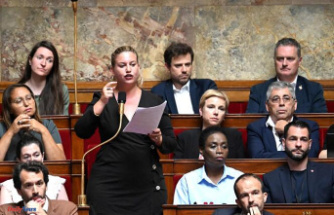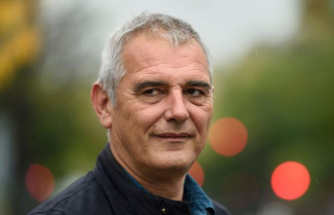NEW YORK -- Although many holiday-season train shows were cancelled or reduced to fewer guests last year due to the pandemic illness, this year's popular attractions are back in botanical gardens, conservatories, and other locations across the country.
These shows are now a long-standing tradition in many cities and feature both model trains and meticulously detailed models of landmark buildings, made from leaves, twigs, and other dried plant materials.
Stephanie Winters creates the landscape around the Coney Island-themed display at the Holiday Train Show in New York.
"It's magical, because people love to imagine themselves in these small landscapes with displays of greenery hiding whimsical components around the models of trains or ornate structures," Karen Daubmann, vice-president for exhibitions at the New York Botanical Garden where the tradition began in 1992.
The show features over 175 New York landmarks models and more than 25 model trains that weave their way past them.
Model trains and holiday greenery are intertwined for a long time in popular imagination. However, it's not surprising that the history of this particular genre is so precise.
Paul Busse, an Ohio landscape architect, began his obsession with trains, architecture, and gardens almost 40 years ago. He set up a garden railway display at the 1982 Ohio State Fair. Busse's now-famous, fanciful structures were decorated with dried plant material throughout the 1980s. His model trains and "botanical architecture," which he called it, were prominently displayed at garden shows, mostly in the Midwest.
Annie Gessendorf is working on a miniature version of the LuEsther T. Mertz Library in New York for the Holiday Train Show at New York Botanical Garden, Thursday, November 11, 2021.
The New York Botanical Garden was captivated by the idea and wanted to find a way to bring people to the garden in winter. In 1992, Busse and his crew created a "Holiday Train Show".
It only had a few tracks and a handful models of New York landmarks for the first year. It was so popular that it became an annual tradition with a few new models each year of New York landmarks," Daubmann says.
Soon, the idea spread quickly.
Similar holiday-themed train shows featuring work by the Busse family and their crew were seen at other locations across the country, such as the Franklin Park Conservatory and Botanical Gardens in Columbus, Ohio; Washington, D.C.'s United States Botanic Garden; Frederik Meijer Gardens and Grand Rapids, Michigan; and the Krohn Conservatory, Cincinnati; and the Nicholas Conservatory and Gardens, Rockford, Illinois; and, the Eiteljorg museum in Indianapolis.
Busse's company, Applied Imagination, Ltd., was founded in Cincinnati in 1991. It quickly outgrew its space and moved to Alexandria, Kentucky, which is where it is currently based. The company employs a dozen people full-time, who create models in a studio that is stocked with plant materials.
"We have everything, from shelf fungus to sticks in different colors and textures to an enormous variety of pinecones. It's hard to imagine the number of types of pinecones out there," said Busse's daughter Laura Busse Dolan who assumed the helm five years ago.
During the preparations of the annual Holiday Train Show at New York Botanical Garden, New York on November 11, 2021, a man works among miniature brownstone buildings.
Applied Imagination's teams, some of which are tasked with building model buildings and others on small bridges and tunnels, pack their bags in October to travel "straight on till Thanksgiving" she says. They are putting together nine holiday programs, many of which will be at botanical gardens.
Dolan says, "It takes everyone in this company to pull it off."
The company has gained a lot of knowledge over the years.
We no longer use dried berries and acorns in our buildings because they are too tasty. Dolan says that little creatures will eat them when they are stored. "One year ago, one of our lampposts was eaten by squirrels. We learned the hard way."
The New York Botanical Garden's standout models include One World Trade Center, which is made using an upward branching design to represent the spirit of rebirth following 9/11; the Solomon R. Guggenheim Museum (largely of shelffungus); Coney Island; the Statue of Liberty and the Apollo Theater. There are also many brownstones.
As preparations begin for the Holiday Train Show, a worker walks through miniature New York landmarks as he prepares to open the New York Botanical Garden on November 11, 2021.
Dolan says that on average, 50 structures are built each year in different locations. "I would estimate that we have built between 2,000 and 3,000 structures over the course our existence."
The smaller ones can take up to 250 hours. The largest one, an 11-foot replica at the Biltmore Estate, Asheville, North Carolina took almost 3,000 hours. Dolan states that it will be displayed at the Biltmore estate through the holiday season."
The New York Show runs from November 20 to January 23. The New York show will require visitors to produce proof of vaccinations and a photo ID. There is also a mandate for masks in the indoor gardens. Tickets can be purchased in advance and are timed.
Date Of Update: 15 November 2021, 14:46











